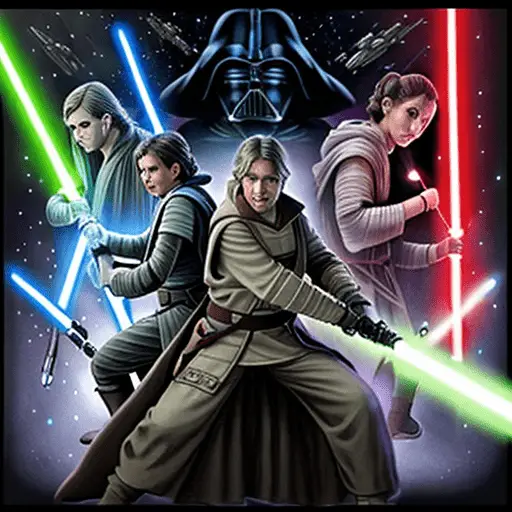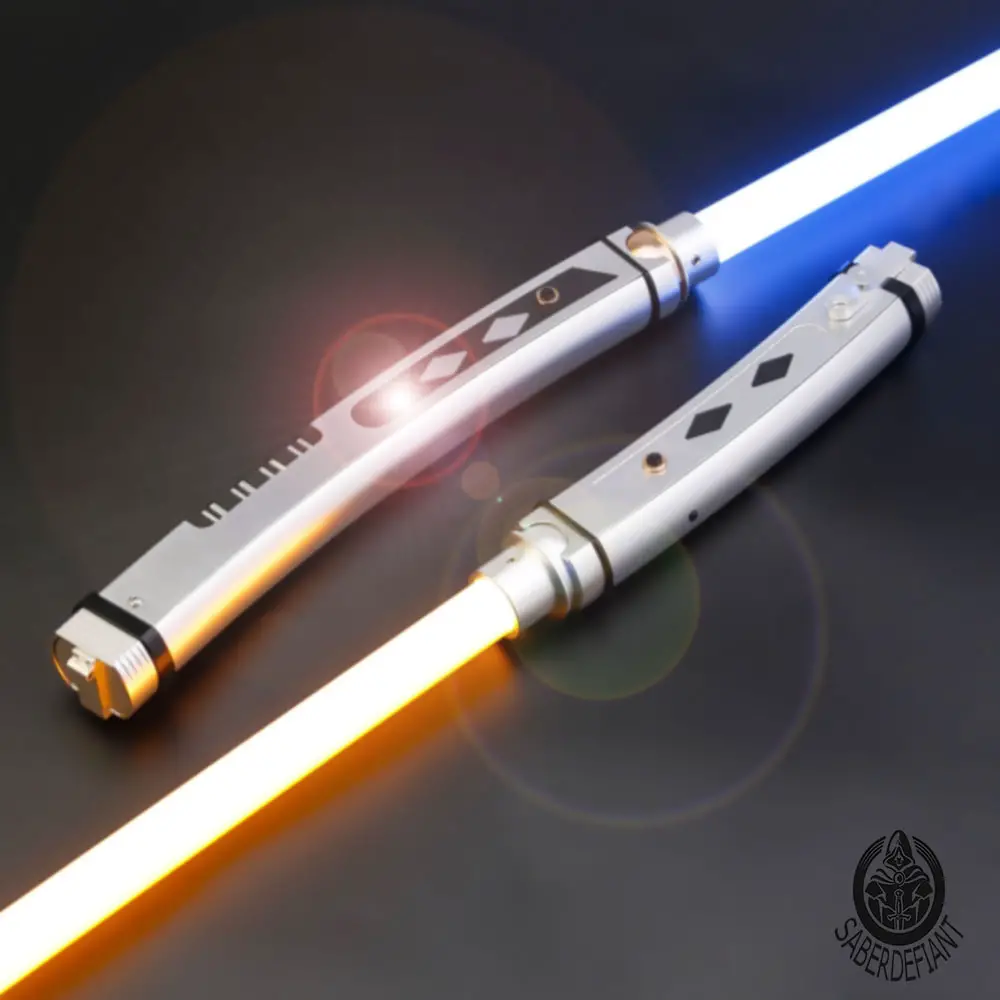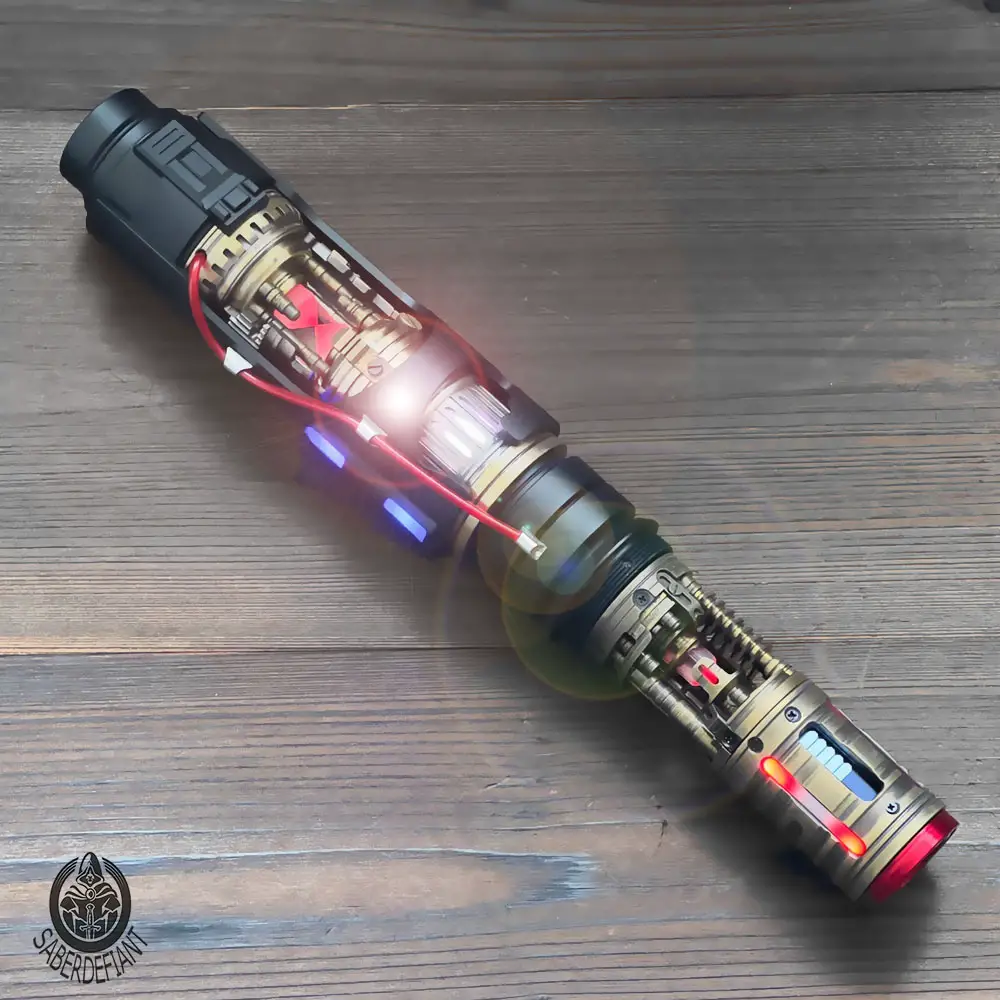Neopixel Lightsaber
Which lightsaber is the strongest
Lightsabers have been a staple in the Star Wars universe since the first Star Wars movies. These weapons of the Jedi and Sith have sparked a heated debate among fans regarding which lightsaber is the strongest. In this article, we will explore the factors contributing to a lightsaber’s strength and attempt to provide a definitive answer to this age-old question.
Kyber crystals and lightsaber colors

Kyber crystals are at the heart of every lightsaber, and their unique properties determine a lightsaber’s strength and abilities. The lightsaber’s color and attack attributes reflect the crystal’s properties. Some rarer crystals can even enhance the wielder’s Force sensitivity. These crystals come in various colors, each having a different effect on a lightsaber. For instance, red kyber crystals, commonly used by Sith, enhance a lightsaber’s destructive power, while green kyber crystals, favored by Jedi Consulars, improve a lightsaber’s precision and control.
Kyber crystals of crystal are only found in the underwater “Broken Lake” on the planet Ilum, and their quantity is minimal. These crystals are highly valued and sought after by Jedi and Sith alike, as they are essential components in the construction of lightsabers.
The kyber crystals that power the lightsaber determine its color. The crystal interacts with the energy the lightsaber hilt produces, and the resulting color reflects the crystal’s unique properties.
Traditionally, Jedi use blue or green crystals, while Sith use red crystals. However, there have been instances of Jedi using different colors, such as purple (seen with Mace Windu) and yellow (seen with the Jedi Temple Guards). In some cases, the color of a lightsaber may also change depending on the user’s emotions or alignment with the light or dark side of the Force.
It’s worth noting that the lightsabers’ colors do not necessarily indicate a user’s power or skill with the Force. Instead, they are a reflection of the crystal’s properties and the user’s personal preferences.
Lightsaber combat forms

Lightsaber combat forms refer to the various fighting styles that Jedi and Sith use when engaging with lightsabers. There are seven primary forms, each with its unique techniques and strategies.
Shii-Cho (Form I): This is the oldest form of the lightsaber and the simplest. It emphasizes broad, sweeping movements that are easy to execute and can be used against multiple opponents.
Makashi (Form II): This form is focused on dueling and is characterized by precise, efficient movements. It is often used by Sith, as it allows them to dispatch their opponents quickly.
Soresu (Form III): Also known as the Way of the Mynock, this form is designed for defense and is particularly effective against blaster fire. It emphasizes fast, efficient movements and is often used by Jedi, who prefer a more passive approach to combat.
Ataru (Form IV): This highly acrobatic form emphasizes speed, agility, and mobility. It is particularly effective against multiple opponents and is often used by Jedi, who prefer a more aggressive approach to combat.
Shien / Djem So (Form V): This form is focused on deflecting blaster fire and redirecting an opponent’s attack. Powerful, sweeping movements characterize it. It is often used by Jedi, who prefer a more direct approach to combat.
Niman (Form VI): This form combines all the previous forms and emphasizes versatility and adaptability. It is often used by Jedi who prefers to be well-rounded and can adapt to any situation.
Juyo / Vaapad (Form VII): This form is the most aggressive and unpredictable of all the conditions. It is particularly effective against dark-side users. Still, it is dangerous to the user, as it can lead to the dark side’s temptation.
Each form has its strengths and weaknesses; for example, Form III – Soresu is considered the best form for defense, while Form V – Djem So is the most effective for countering blaster fire.
Unique lightsabers

Lightsabers in the Star Wars universe are often unique to their wielders. They can be customized to suit their personalities or needs. Here are some examples of unique lightsabers:
Mace Windu’s lightsaber – Mace Windu, a Jedi Master, had a purple lightsaber that was unique in color. According to canon, the purple hue resulted from Windu’s use of the Force’s light and dark sides.
Darth Maul’s double-bladed lightsaber – Darth Maul, a Sith Lord, wielded a hinged, double-bladed design that allowed him to use it as both a single-bladed and double-bladed weapon.
Kylo Ren’s crossguard lightsaber – Kylo Ren, a dark side user, used a unique lightsaber with crossguards projected from the main hilt. The crossguards were designed to prevent the user’s hand from sliding up the blade during combat.
Ahsoka Tano’s white lightsabers: Ahsoka Tano, a former Jedi Padawan, used two white lightsabers after leaving the Jedi Order. The blade’s white color symbolized her neutrality in the conflict between the Jedi and the Sith.
Ezra Bridger’s lightsaber/blaster hybrid – Ezra Bridger, a member of the Rebel Alliance, used a unique lightsaber that could also transform into a blaster. The weapon was designed to give him versatility in combat.
Sabine Wren’s darksaber: Sabine Wren was a Mandalorian warrior who wielded a darksaber. It is a black-bladed lightsaber with a unique shape, handed down through generations to Mandalorian leaders.
These are just a few examples of the many unique lightsabers in the Star Wars universe. Each lightsaber represents its wielder’s personality, values, and fighting style, making them unique.
Lightsaber modification

Lightsaber modification can be a fun and rewarding experience for Star Wars fans who want to create a custom lightsaber that reflects their unique style and personality. Here are some possible modifications you could make to a lightsaber:
Change the hilt: The hilt is the lightsaber’s handle, and countless designs are available for purchase or DIY creation. You could modify an existing hold, or start from scratch using materials like metal, wood, or plastic.
Add custom electronics: You could add custom electronics to your lightsaber, such as sound effects, motion sensors, or even LED lights that change color as you swing the blade.
Upgrade the blade: While the classic lightsaber blade is a solid color, you could modify it to have a gradient or multiple shades. You could also create a flickering effect, add sparks or smoke, or even make the blade look like a flame or lightning.
Customize the sound: Lightsabers make iconic sounds when activated and swung, but you could modify the sound to make it unique to your saber. You could add your sound effects or modify the existing sounds’ pitch, volume, or duration.
Personalize the design: You could add personal touches to your lightsaber, such as etching a design onto the hilt, adding a logo or symbol, or even embedding gems or crystals into the handle.
Modifying a lightsaber requires skill and knowledge of electronics, woodworking, metalworking, or other related crafts. If you need experience in these areas, you should seek resources or tutorials to guide you.
Conclusion
In conclusion, determining which lightsaber is the strongest is more complex. Several factors, such as kyber crystals, combat forms, unique designs, and modifications, contribute to a lightsaber’s strength and abilities. However, based on the information presented, the power of a lightsaber depends on its user’s skill and connection to the Force. As such, there is no ultimate answer to which lightsaber is the strongest, as each person has a unique perception of the most potent lightsaber. If you still need to find your strongest lightsaber, come to Saberdefiant and choose the lightsaber that resonates with you the most!

